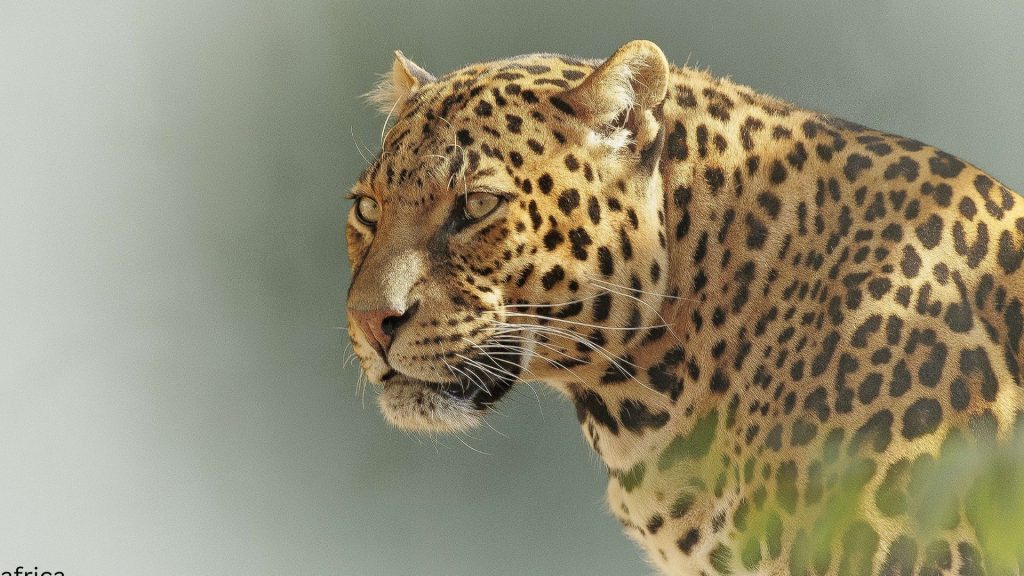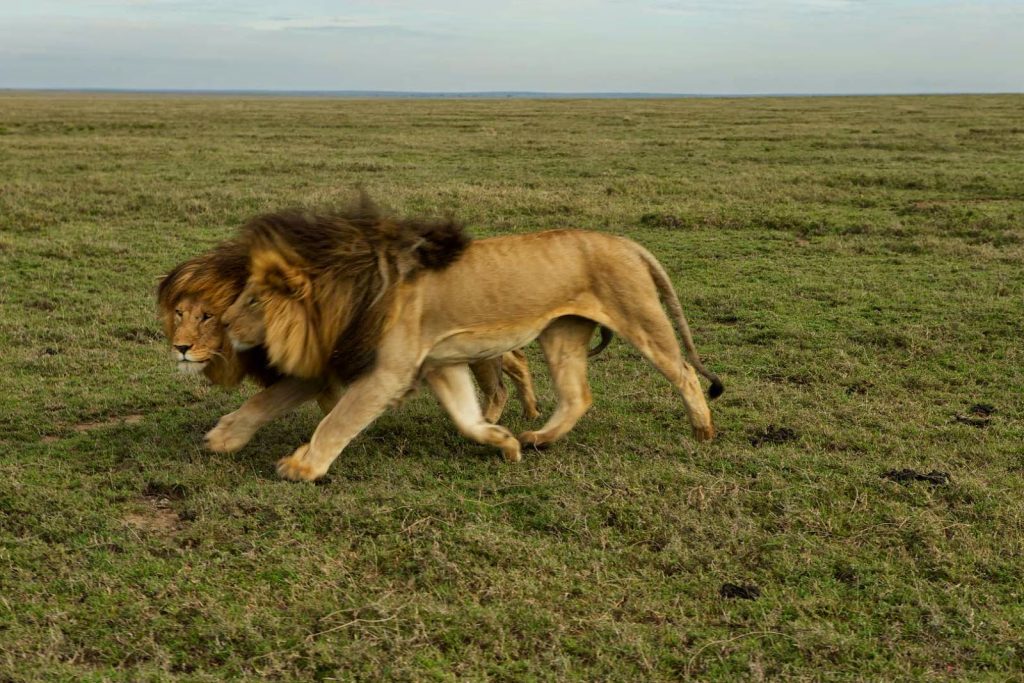Ngorongoro Conservation Area
Ngorongoro Conservation Area (UNESCO World Heritage Site)
Size: 8,292 sq km (3201 sq miles)
Established: 1959
Distance from Arusha: 180 km (110 miles)
Description:
The Ngorongoro Conservation Area has officially declared a UNESCO World Heritage Site in 1979. The area consists of various landscapes and includes dense mountain forests, woodlands, grasslands, lakes, and swamps. Some of the most important archeological sites in the world, such as Oldupai Gorge and Laetoli can be found in the Ngorongoro Conservation Area. Archeologists found evidence showing that the area was occupied by hominids over 3 million years ago and thus claiming that it could be the birthplace of mankind.
And then of course there is the Ngorongoro Crater, the largest unbroken, inactive, and unfilled caldera in the world. With a diameter of approximately 19 km (12 miles) and its majestic walls that rise just over 610 m (2000 feet), the crater floor covers an area of 260 sq km (100 sq miles). Over 30,000 animals including the rare black rhino call this unique place their home. Today over 40,000 Masais reside in the area making the Ngorongoro Conservation Area one of the few places in Tanzania where human habitation is allowed within a wildlife-protected area. The conservation shares a boundary with the Serengeti National Park and one must drive through the conservation in order to get to the Serengeti.
Highlights:
The crater floor is covered by various landscapes that range from dense mountain forests and woodlands to grasslands, lakes, and swamps. Water sources include the two main rivers, Munge River in the west and Lerai River in the east as well as the Ngotokitok spring that spills into a swamp.
Huge herds of ungulates dominate the crater floor with zebras, wildebeests, elands, Grant’s and Thompson’s gazelles being the species most commonly seen. But the crater is also home to the “big five” and elephants, lions, and buffaloes are often spotted. Leopards are rarely seen as they preferred staying in the forests on the crater rim. The almost extinct black rhino can also be found in the crate and sightings aren’t rare either. Serval cats spotted hyenas, and jackals are also often seen while cheetahs are more difficult to spot.
But it is not only mammals that reside in the conservation and great numbers of lesser flamingos can be seen at Lake Magadi, a primarily alkaline lake. Other common birds include ostriches, kori bustards, crowned cranes, white-backed vultures, black kites, cattle egrets, tawny eagles, augur buzzards, and many more.
A walk along the Ngorongoro Crater rim accompanied by an armed ranger takes visitors on a path created by livestock, pass moss-covered trees and Masai bomas, offering breath-taking views of the crater below.
The Ngorongoro Conservation Area spans vast expanses of highland plains, savanna, savanna woodlands, and forests. Established in 1959 as multiple land-use areas, with wildlife coexisting with semi-nomadic Maasai pastoralists practicing traditional livestock grazing, it includes the spectacular Ngorongoro Crater, the world’s largest caldera. The property has global importance for biodiversity conservation due to the presence of globally threatened species, the density of wildlife inhabiting the area, and the annual migration of wildebeest, zebra, gazelles, and other animals into the northern plains. Extensive archaeological research has also yielded a long sequence of evidence of human evolution and human-environment dynamics, including early hominid footprints dating back 3.6 million years
Brief synthesis
The Ngorongoro Conservation Area (809,440 ha) spans vast expanses of highland plains, savanna, savanna woodlands, and forests from the plains of the Serengeti National Park in the north-west to the eastern arm of the Great Rift Valley. The area was established in 1959 as a multiple land-use area, with wildlife coexisting with semi-nomadic Maasai pastoralists practicing traditional livestock grazing. It includes the spectacular Ngorongoro Crater, the world’s largest caldera, and Olduvai Gorge, a 14km long deep ravine. The property has global importance for biodiversity conservation given the presence of globally threatened species such as the black Rhino, the density of wildlife inhabiting the Ngorongoro Crater and surrounding areas throughout the year, and the annual migration of wildebeest, zebra, Thompson’s and Grant’s gazelles and other ungulates into the northern plains.
The area has been subject to extensive archaeological research for over 80 years. It has yielded a long sequence of evidence of human evolution and human-environment dynamics, collectively extending over a span of almost four million years to the early modern era. This evidence includes fossilized footprints at Laetoli, associated with the development of human bipedalism, a sequence of diverse, evolving hominin species within Olduvai gorge, which range from Australopiths such as Zinjanthropus boisei to the Homo lineage that includes Homo habilis, Homo erectus, and Homo sapiens; an early form of Homo sapiens at Lake Ndutu; and, in the Ngorongoro crater, remains that document the development of stone technology and the transition to the use of iron. The overall landscape of the area is seen to have the potential to reveal much more evidence concerning the rise of anatomically modern humans, modern behavior, and human ecology.
Criterion (iv): Ngorongoro Conservation Area has yielded an exceptionally long sequence of crucial evidence related to human evolution and human-environment dynamics, collectively extending from four million years ago to the beginning of this era, including physical evidence of the most important benchmarks in human evolutionary development. Although the interpretation of many of the assemblages of Olduvai Gorge is still debatable, their extent and density are remarkable. Several of the type fossils in the hominin lineage come from this site. Furthermore, future research in the property will likely reveal much more evidence concerning the rise of anatomically modern humans, modern behavior, and human ecology.
Criterion (vii): The stunning landscape of Ngorongoro Crater, combined with its spectacular concentration of wildlife, is one of the planet’s greatest natural wonders. Spectacular wildebeest numbers (well over 1 million animals) pass through the property as part of the annual migration of wildebeest across the Serengeti ecosystem and calve in the short grass plains that straddle the Ngorongoro Conservation Area/Serengeti National Park boundary. This constitutes a truly superb natural phenomenon.
Criterion (viii): Ngorongoro crater is the largest unbroken caldera in the world. The crater and the Olmoti and Empakaai craters are part of the eastern Rift Valley, whose volcanism dates back to the late Mesozoic / early Tertiary periods and is famous for its geology. The property also includes Laetoli and Olduvai Gorge, which contain an important palaeontological record of human evolution.
Criterion (ix): The variations in climate, landforms, and altitude have resulted in several overlapping ecosystems and distinct habitats, with short grass plains, highland catchment forests, savanna woodlands, montane long grass plains, and high open moorlands. The property is part of the Serengeti ecosystem, one of the last intact ecosystems in the world that harbors large and spectacular animal migrations.
Criterion (x): Ngorongoro Conservation Area is home to a population of some 25,000 large animals, mostly ungulates, alongside the highest density of mammalian predators in Africa, including the densest known population of lions (estimated 68 in 1987). The property harbors a range of endangered species, such as the Black Rhino, wild hunting dog, golden cat, and 500 species of birds. It also supports one of the largest animal migrations on earth, including over 1 million wildebeest, 72,000 zebras, and c.350,000 Thompson and Grant gazelles.
Integrity
The property was inscribed under natural criteria (vii), (viii), (ix), and (x) in 1979 and under cultural criteria (iv) in 2010. Thus, the statement of integrity reflects integrity for natural values at the date of inscription in 1979 and for cultural values in 2010.
About natural values, the grasslands and woodlands of the property support very large animal populations, largely undisturbed by cultivation at the time of inscription. The wide-ranging landscapes of the property were not impacted by development or permanent agriculture at the time of inscription. The integrity of the property is also enhanced by being part of the Serengeti-Mara ecosystem. The property adjoins Serengeti National Park (1,476,300 ha), which is also included on the World Heritage List as a natural property. Connectivity within and between these properties and adjoining landscapes, through functioning wildlife corridors, is essential to protect the integrity of animal migrations. No hunting is permitted in the Ngorongoro Conservation Area (NCA), but wildlife poaching is a continuing threat, requiring effective patrolling and enforcement capacity. Invasive species are a source of ongoing concern, requiring continued monitoring and effective action if detected. Tourism pressure is also of concern, including the potential impacts of increased visitation, new infrastructure, traffic, waste management, disturbance to wildlife, and the potential to introduce invasive species.
The property provides grazing land for semi-nomadic Maasai pastoralists. At the time of inscription, an estimated 20,000 Maasai were living on the property, with some 275,000 head of livestock, which was considered within the capacity of the reserve. No permanent agriculture is officially allowed on the property. Further growth of the Maasai population and the number of cattle should remain within the property’s capacity, and increasing sedentarisation, local overgrazing, and agricultural encroachment threaten the property’s natural and cultural values. There were no inhabitants in Ngorongoro and Empaakai Craters or the forest at the time of inscription in 1979.
The property encompasses the known archaeological remains and areas of high archaeo-anthropological potential where related finds might be made. However, the integrity of specific paleo-archaeological attributes and the overall sensitive landscape are, to an extent, under threat and thus vulnerable due to the lack of enforcement of protection arrangements related to grazing regimes and from proposed access and tourist-related developments at Laetoli and Olduvai Gorge.
Authenticity
In general, the authenticity of the fossil localities is unquestionable; however, given the nature of fossil sites, the context for the fossil deposits needs to remain undisturbed (except by natural geological processes). As the nomination dossier does not contain sufficient detailed information on most of the sites to delineate their extended areas or the areas of archaeological sensitivity or sufficient guarantees in terms of management arrangements to ensure that the sites will remain undisturbed and not threatened by visitor access, construction or grazing cattle, their authenticity is vulnerable.
Protection and management requirements
The Ngorongoro Conservation Area Ordinance of 1959 is the primary legislation protecting the property. The property is managed by the Ngorongoro Conservation Area Authority (NCAA). The Division of Antiquities is responsible for managing and protecting the paleo-anthropological resources within the Ngorongoro Conservation Area. A memorandum of understanding should be established and maintained to formalize relations between the two entities.
Property management is guided by a General Management Plan. Currently, the primary management objectives are to conserve the property’s natural resources, protect the Maasai pastoralists’ interests, and promote tourism. The management system and the Management Plan need to be widened to encompass an integrated cultural and natural approach, bringing together ecosystem needs with cultural objectives to achieve a sustainable approach to conserving the Outstanding Universal Value of the property, including the management of grasslands and the archaeological resource, and to promote environmental and cultural awareness. The Plan needs to extend the management of cultural attributes beyond social issues and the resolution of human-wildlife conflicts to the documentation, conservation, and management of cultural resources and the investigation of the potential of the wider landscape in archaeological terms.
NCAA must have the capacity and specialist skills to ensure the effectiveness of its multiple-use regime, including knowledge of the management of pastoral use in partnership with the Maasai community and other relevant stakeholders. The NCAA also needs to ensure staff has natural and cultural heritage skills to achieve well-designed, integrated, and effective conservation strategies, including effective tourism, access, and infrastructure planning.
A thorough understanding of the capacity of the property to accommodate human use and livestock grazing is required, based on the needs of the Maasai population and the assessment of the impact of the human populations on the ecosystems and archaeology of the property. An agreed joint strategy between the NCAA, Maasai community leaders, as well as other stakeholders is required to ensure human population levels and levels of resource use are in balance with the protection of its natural and cultural attributes, including in relation to grazing and grassland management, and the avoidance of human-wildlife conflict. The active participation of resident communities in decision-making processes is essential, including developing benefit-sharing mechanisms to encourage a sense of ownership of and responsibility for the conservation and sustainable use of the property’s natural and cultural resources.
An overall tourism strategy for the property is a long-term requirement to both guide the public use of the property and ways of presenting the property and to prioritize the quality of the tourism experience rather than the number of visitors and tourism facilities. Vehicle access to the crater and other popular areas of the property requires clear limits to protect the quality of experience of the property and to ensure natural and cultural attributes are not unduly disturbed. Developments and infrastructure for tourism or management of the property that impinges on its natural and cultural attributes should not be permitted.
Considering the important relationship, in natural terms of the property to adjoining reserves, it is important to establish effective and continuing collaboration between the property, Serengeti National Park, and other areas of the Serengeti-Mara ecosystem to assure connectivity for wildlife migrations and harmonize management objectives regarding tourism use, landscape management, and sustainable development.



